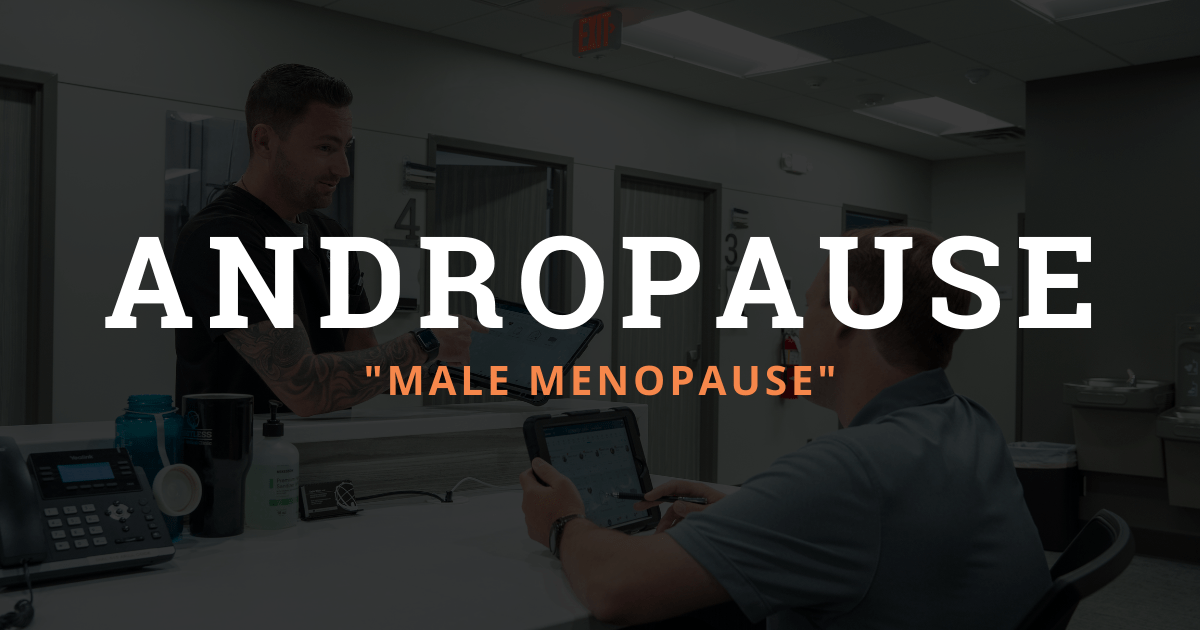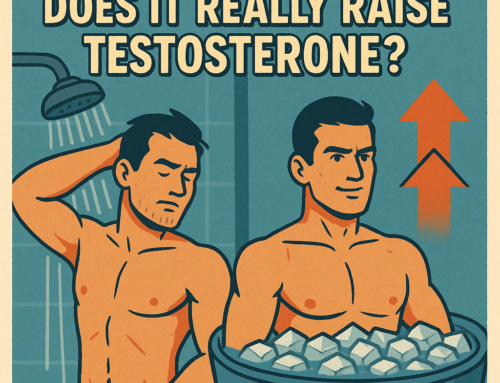Definition
Many people don’t know that men experience a natural decline in hormones, known as andropause. Testosterone levels decrease by 1-2% each year in men after the age of 30. The decline is normal with age, much like when women experience menopause, although menopause occurs more suddenly than andropause.
Androgens are made in the testes and small amounts are also made in the adrenal glands just above the kidneys. Androgens are is a group of male sex hormones that aid in the development and growth of the reproductive system. It also influences facial hair, muscle mass, sex drive, and other features in males. The main androgen in males is testosterone.
Testosterone’s Role in the Male Body
Other than the development of the reproductive system, testosterone plays a critical role in young men. Testosterone helps boost energy, build muscle, grow facial hair, increase bone strength and density, and more. In youth, too much or too little testosterone can also cause a variety of problems too.
Other Functions
- Helps testicles and penis mature
- Libido
- Beard and body hair growth
- Fat metabolism
- Deepening voice
Symptoms
The progressive testosterone deficiency that happens during andropause as men age can lead to hypogonadism. Hypogonadism can result in physical, sexual, and psychological symptoms. Mood changes, decreased libido, erectile dysfunction, difficulty sleeping, difficulty concentrating, increased fat, are some symptoms of hypogonadism.
Other symptoms include:
- Low energy
- Depression or sadness
- Decreased motivation
- Lowered self-confidence
- Reduced muscle mass and feelings of physical weakness
- Gynecomastia, or development of breasts
- Decreased bone density
- Infertility
- Baldness or hair loss
Other Factors That Can Cause Low T
Major factors that decrease testosterone levels include lack of sleep, high-stress levels, alcohol abuse, drug abuse, poor diet, lack of exercise, medical conditions (diabetes, cancer, etc.), genetic conditions, medications, and direct trauma to the testicles or brain/pituitary gland.
Testing & TRT
Testosterone Replacement Therapy is used to counteract the effects and symptoms of andropause. The only way to know your testosterone level is to get tested. Before determining if you are a candidate for TRT, the clinic will do a blood draw to determine your base T levels. If your level is considered low, a medical provider may prescribe TRT.
Testosterone levels vary widely depending on age. Below is a list of average total testosterone levels based on age range:
- 17-20 – 300-1200
- 21-29 – 290-1100
- 30-39 – 270-970
- 40-49 – 252-916
- 50-59 – 215-878
- 60-69 – 196-859
- 70-79 – 156-819
Conclusion
Andropause is common as men age, so don’t let the symptoms go unnoticed and pass them off as a part of “getting old”. TRT can help to reverse some of the symptoms you may be feeling.






